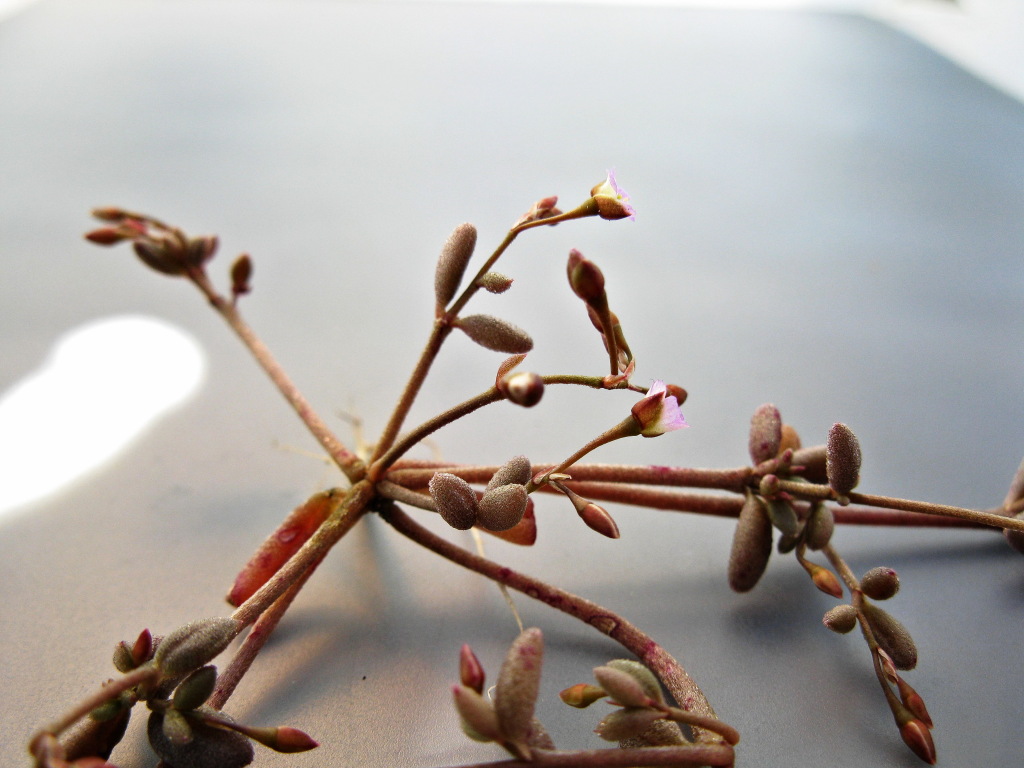Calandrinia calyptrata
Hook.f. Pink PurslaneProstrate, often reddish annual, stems to c. 15(–c. 30) cm long, simple or few-branched. Leaves basal and at least on lower part of flowering stems, narrowly obovate to oblong, often semi-terete, the largest 1–4 cm long, 2–5 mm wide, subsessile, glabrous. Cymes elongating, c. 3–10-flowered; bracts opposite; pedicels 2–5 mm long at anthesis, elongating to c. 1 cm in fruit; sepals broadly ovate, 2–3 mm long, acute (rarely obtuse), persistent; petals 5, not or barely exceeding sepals, pale pink; stamens 5–7; style trifid to base. Capsule ovoid, 2.5–3.5(–4) mm long, pale, splitting to c. midway or slightly below into 3 valves; seeds 10–20, almost circular, c. 0.7 mm diam., shining red-brown to blackish, virtually smooth. Flowers mainly Sep.–Nov.
LoM, MuM, Wim, GleP, VVP, VRiv, MSB, RobP, MuF, GipP, OtP, WaP, Gold, CVU, GGr, DunT, NIS, EGL, EGU, WPro, HSF, HNF, MonT, VAlp. Also WA, SA, NSW, Tas. Widespread on sandy soils, and on ledges and in crevices of rock outcrops in drier districts, sometimes occurring with C. eremaea. Occasionally coastal.
Walsh, N.G. (1996). Portulacaceae. In: Walsh, N.G.; Entwisle, T.J., Flora of Victoria Vol. 3, Dicotyledons Winteraceae to Myrtaceae, pp. 215–224. Inkata Press, Melbourne.
 Spinning
Spinning


